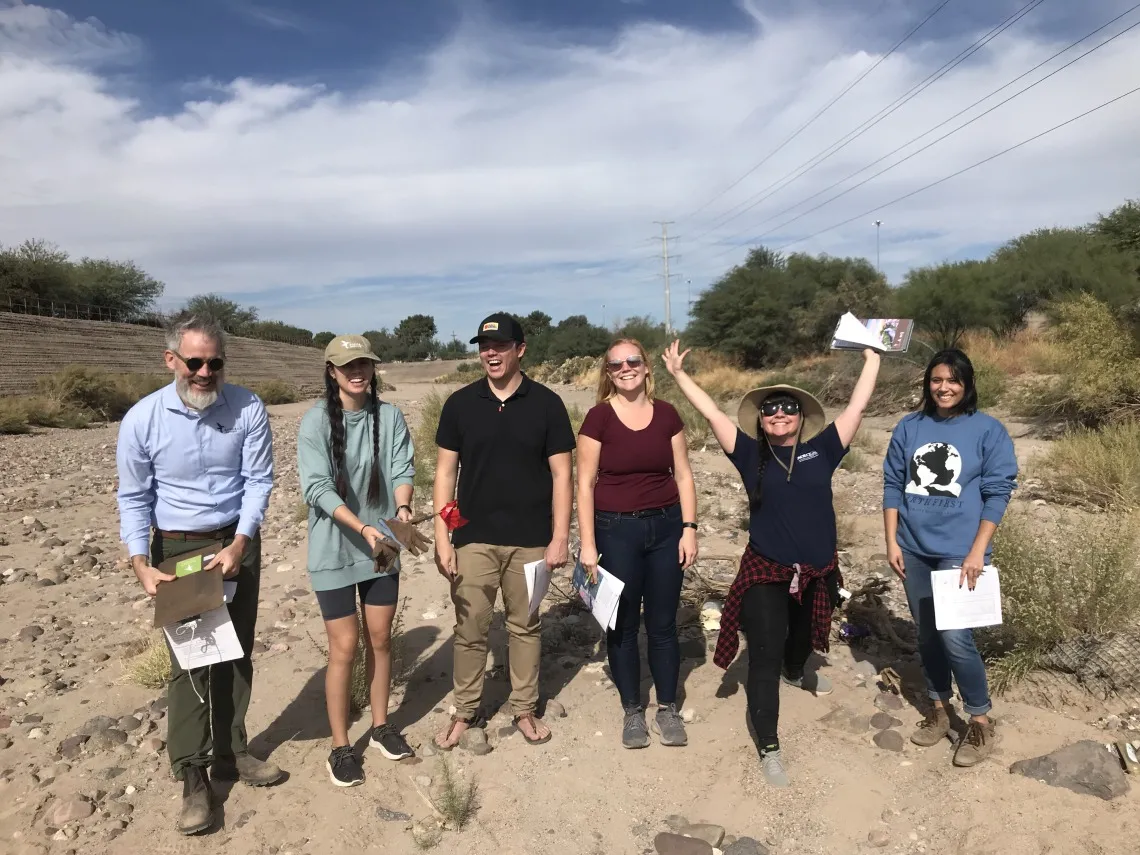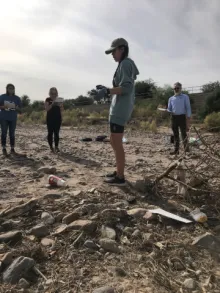Studying Trash for a Cleaner Future

Trash Team: (from right to left) Luke Cole, Jamie Irby, Billy Thoi, Carly Blair, Meghan Smart, and Mackenzie Moore.

Earth Grant student Jamie Irby (front) describes waste items along a transect to mentor Luke Cole (back left), ADEQ contractor Mackenzie Moore (back right), and citizen scientist Carly Blair (back center).
"Water bottle, plastic bag, another plastic bag, a piece of… soda bottle? Plastic...I think this one is an auto part, yeah? Another, no, two more plastic bags…” Jamie Irby, UArizona Environmental Science senior, points and describes half-buried trash items as she slowly walks a transect in the seasonally dry Santa Cruz River in Tucson. Luke Cole, Associate Director of the Santa Cruz River Program at Sonoran Institute and Jamie’s mentor, listens and records each piece of trash, organized by type, on a form created for this study. Today, Jamie and Luke are joined by staff and volunteers from the Arizona Department of Environmental Quality (ADEQ) to share the study method and discuss collaborations related to ADEQ’s Arizona Water Watch project, which monitors the health of waterways with help from volunteers from all over the state.
We know trash can pollute waterways and affect environmental health. Local volunteer organizations like Tucson Clean and Beautiful host multiple river clean-up events every year. But why is it important to study the trash? In other regions, trash data has been used to advocate for improved business practices or policy change, such as banning single use plastics. By studying the specific items, frequency of items, and quantities of waste materials that end up in the Santa Cruz River, Sonoran Institute can use this data in partnership with government and businesses to address environmentally hazardous waste at the source. Pima County Regional Flood Control District, as one example, have reported community stakeholders consistently identify “trash” a priority issue for the Santa Cruz River. Jamie’s data will be directly informing the District’s flood control management and engineering plans moving forward.
Jamie describes her undergraduate journey through environmental science classes, on-campus research, and now conducting and communicating research with a community partner as “becoming a superhero.” Jamie plans on pursuing graduate school after her graduation in May, and describes doing environmental research at the federal level as her ultimate dream job.

